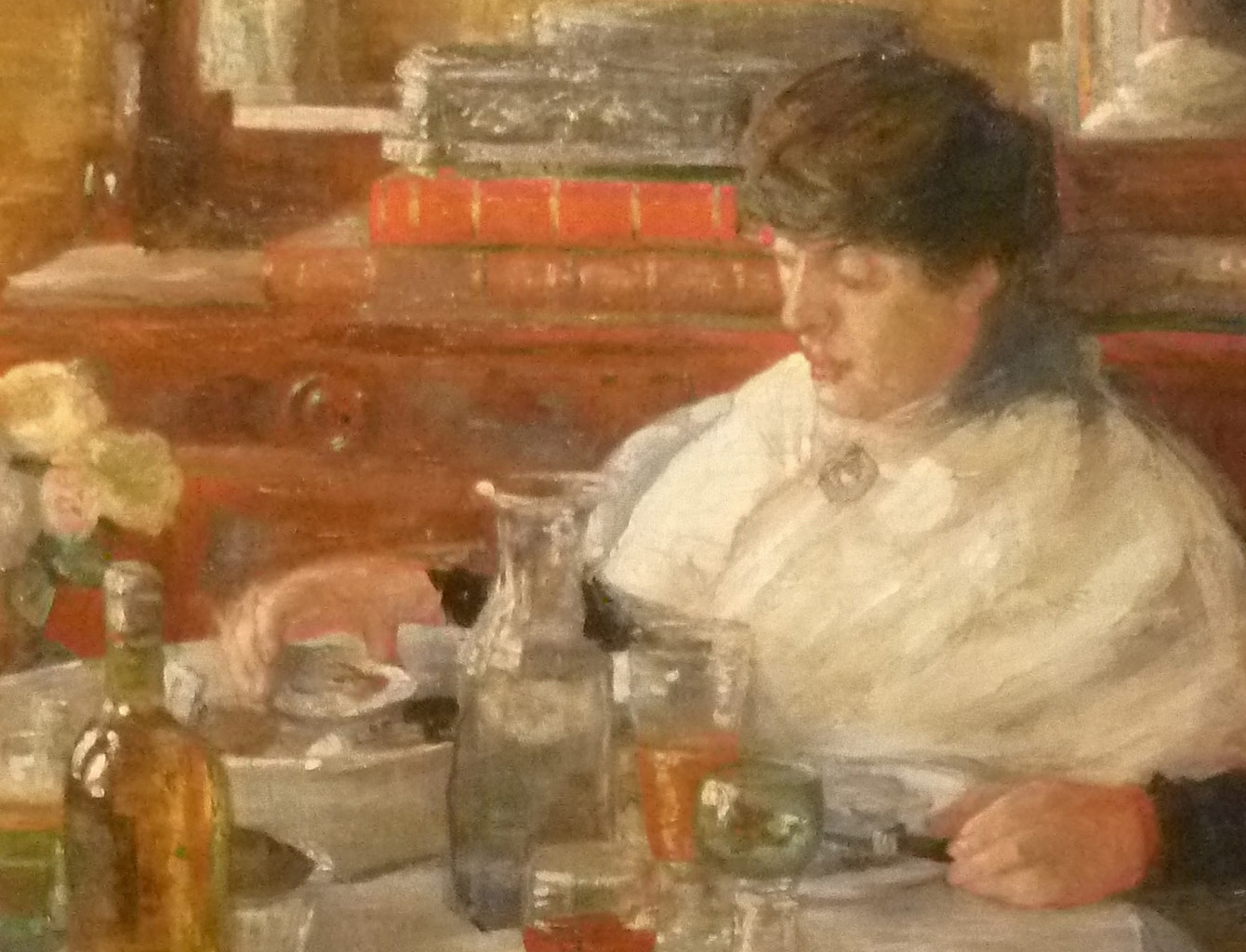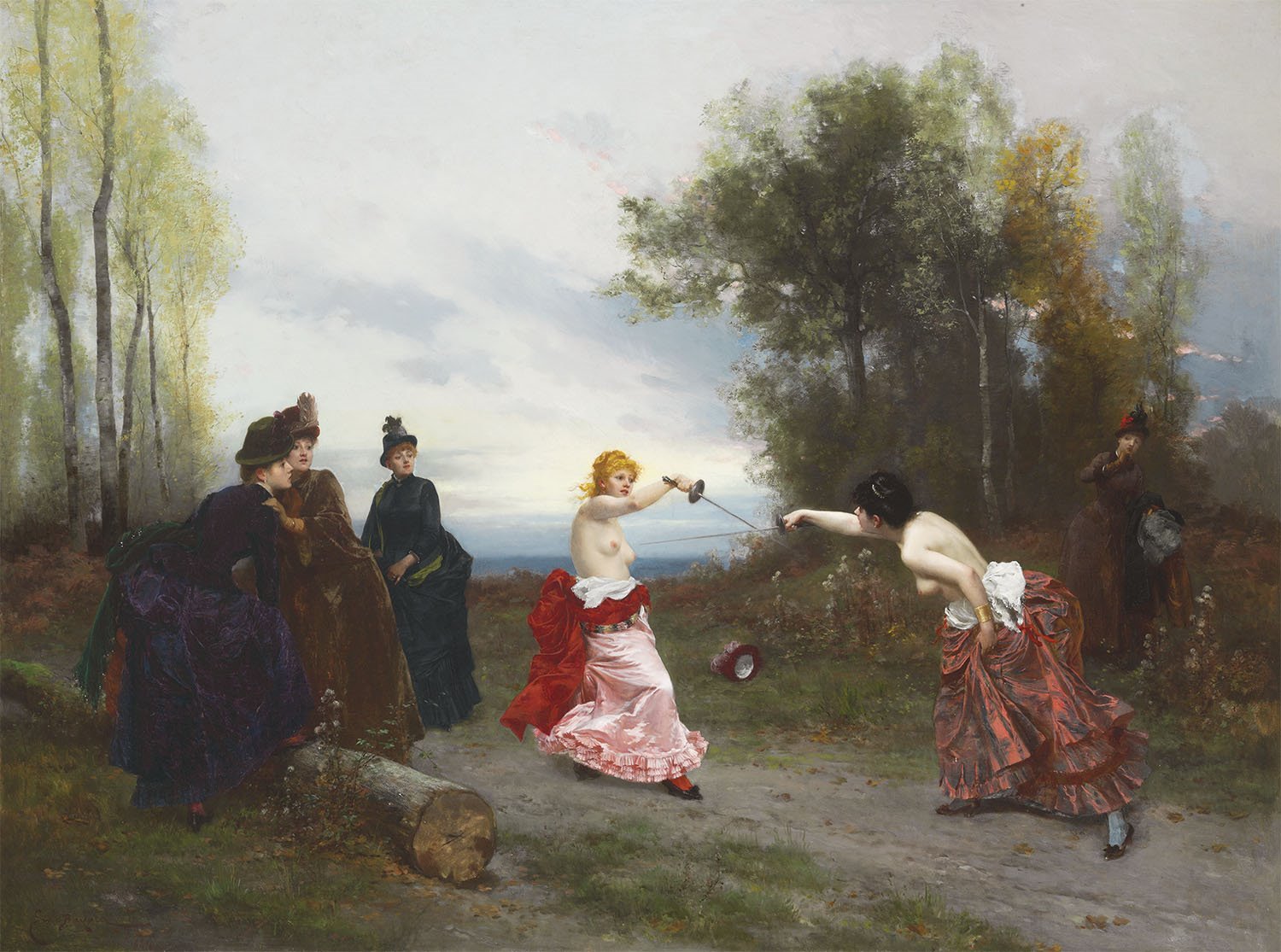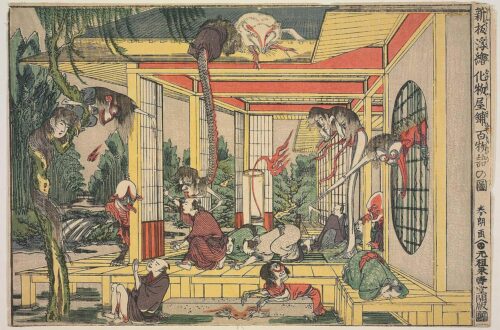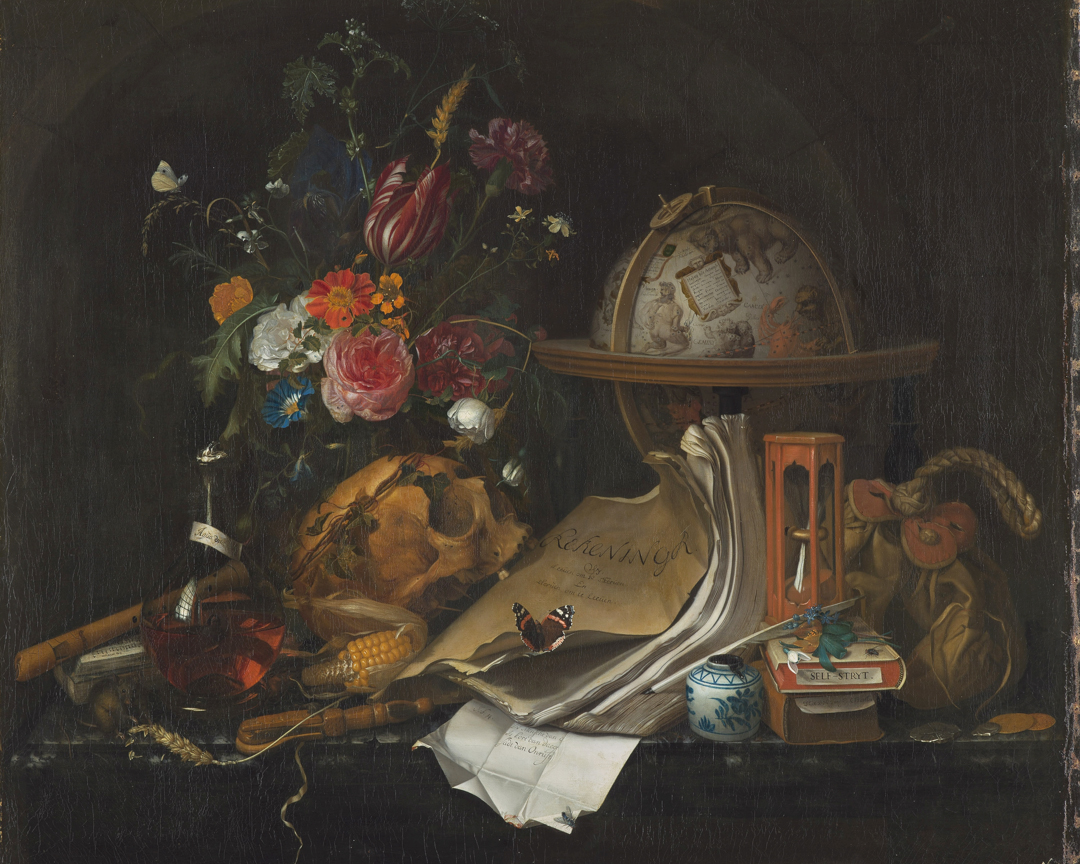
James Ensor, Oyster Eaters
Let’s talk about James Ensor’s Oyster Eater today. James Ensor is one of the most important Belgian painters of the late 19th and early 20th century. His paintings were considered scandalous during the 19th century. The Belgian art critic Octave Maus wrote about his work:
“Ensor is the leader of a clan. Ensor is the limelight. Ensor sums up and concentrates certain principles which are considered to be anarchistic. In short, Ensor is a dangerous person who has great changes. … He is consequently marked for blows. It is at him that all the harquebuses are aimed. It is on his head that are dumped the most aromatic containers of the so-called serious critics.”
Now let us have a look at his painting “Oyster Eater” he created in 1882. it is part of a series called “The Burger Salon” which showed common scenes of the life of the small-town bourgeoisie.

Royal Museum of Fine Arts Antwerp, Belgium

At the first, second and even third glance this painting is completely harmless. It shows a cozy genre scene with a woman, sitting at a table within a middle-class, bourgeois setting, enjoying her meal. As a subject it can’t get more common than that. It is just a woman, eating.

The table in the middle is set for two. The other person who discarded their napkin on the chair in the front, they just left their place. The table is not too extravagantly set: We see an empty plate, another plate with a bread roll, two bottles that may contain white wine, a carafe, filled with water, and some glasses. A small bouquet of flowers in a vase. A fruit (a lemon?) in front of a napkin. And, sitting on the opposite of the table and the viewer, we can see a young woman with a white cloth around her shoulders, completely concentrated on eating her meal containing of oysters. She is Ensors sister Mariëtte Caroline Emma, or Mitche as she was called.
Behind her is a cabinet with some books. It looks like a typical 19th-century dining room, a little bit stuffy. The dark colours give it an intimate, homely feel. The viewer is forced into the role of a voyeur who is spying on the everyday life of an ordinary family. We are the fly on the wall although there is nothing spectacular to see. By the way: The room with the cabinet is part of Ensor’s parental home and the furniture can still be seen today in the current Ensor house museum.
Ensor shows brushwork that reminds us of the impressionists: His sketchy brushstrokes are energetic and dense, the colours set one next to the other, without being blurred into each other. The whole painting seems to move because of the quick and energetic brushstrokes. The whole scene is close to disintegrate into pure colour. By the way: the picture I placed here does not show the condition of today. The painting was recently restored and shows it’s original colours which are much more blue-ish and vibrant than you can see here. Old varnish tends to become yellow over time.

But why did it cause a little scandal? Why was it rejected by the Antwerp Salon in 1882? It surely was not because Ensor was experimenting with colours, perspective, subjects? Painters all over started to experiment with their art:
”They gradually distanced themselves from the idea that art had a duty to hold up a mirror to the public. It wasn’t their job, they argued, to dictate what was good, right or beautiful: the viewer should be allowed simply to enjoy their talent. They threw out all sorts of rules on perspective and lighting and began to experiment and to develop styles of their own, through which they could develop freely.”
Even the fiercest and most conservative art critics has become used to the impressionistic and freer styles of painting in the late 1800s. Indeed, it wasn’t only the style of painting, it was the combination of style and subject. The painting is huge, 2 x 1.3 m (81 in × 59 in) which was seen as inappropriate for such a common genre scene. But it was not only the style which the critics didn’t like or the fact that it was a genre scene on a canvas of a size that would be more suitable for an important historical subject. It was also the subject itself which was seen as offensive. You may ask now: What could be offensive about a woman, sitting at a table, eating? It surely can’t become more homely and ordinary than that, right? Well, she is eating Oysters and drinking wine. Oysters were considered an aphrodisiac. The critics saw this painting with the assumed suggestive undercurrents as immoral and it was often compared with Jan Steens The Oyster Eater /Girl Offering Oysters (c.1658–1660)

21 cm x 15 cm, Mauritshuis, The Hague, Netherlands
In Jan Steen’s small painting we can see a young woman, looking directly at the viewer. Her expression is a little bit flirtatious while she is sprinkling salt on the oysters. Here, the undercurrents are indeed sexual: As already described, oysters were seen as aphrodisiac. The oyster shells, placed alongside partially eaten items like the bread, imply the temporariness of earthly pleasures. Oysters were also a symbol of Aphrodite, the goddess of love.

But when we think of the Ensor-painting: Ensor painted his little sister during a meal. Considering that he depicted his sister, aren’t the erotic undertones highly improbable? Personally, I think so. In 1882, oysters were cultivated on a large scale in Ostend for export and were simply easy to come by. Ensor later said he wished he’d painted Mitche tucking into mussels instead.
Anyways. The rejection of the Antwerp Salon in 1882 and the second rejection of L’Essor in Brussels (1) in 1883 led to the founding of the group Les XX (Les Vingt)(2) where Ensor and his fellow avant-garde artists formed their own group with their own exhibitions.
— — — — — — — — — — — — — — — — —
- L’Essor was an art group in Brussels which came into existence under the name “Cercle des Elèves et Anciens Elèves des Académies des Beaux-Arts de Bruxelles” (“Circle of alumni and students of the Academies of Fine Arts in Brussels”) in 1876. Only in November 1879 was the association’s name changed to ‘L’Essor’, a French word meaning ‘rising’ or ‘booming’. The name thus ceased its reference to the academic institutions in Brussels. Its motto was “a unique art, one life”, indicating its focus on the unity between Art and Life.
- The ideal of the group responded to the theories of Viollet le Duc, in particular that of the integration of the so-called minor arts (decorative arts) with the major arts (architecture).



